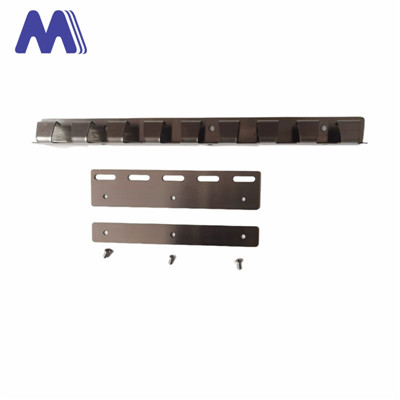- Afrikaans
- Albanian
- Amharic
- Arabic
- Armenian
- Azerbaijani
- Basque
- Belarusian
- Bengali
- Bosnian
- Bulgarian
- Catalan
- Cebuano
- Corsican
- Croatian
- Czech
- Danish
- Dutch
- English
- Esperanto
- Estonian
- Finnish
- French
- Frisian
- Galician
- Georgian
- German
- Greek
- Gujarati
- Haitian Creole
- hausa
- hawaiian
- Hebrew
- Hindi
- Miao
- Hungarian
- Icelandic
- igbo
- Indonesian
- irish
- Italian
- Japanese
- Javanese
- Kannada
- kazakh
- Khmer
- Rwandese
- Korean
- Kurdish
- Kyrgyz
- Lao
- Latin
- Latvian
- Lithuanian
- Luxembourgish
- Macedonian
- Malgashi
- Malay
- Malayalam
- Maltese
- Maori
- Marathi
- Mongolian
- Myanmar
- Nepali
- Norwegian
- Norwegian
- Occitan
- Pashto
- Persian
- Polish
- Portuguese
- Punjabi
- Romanian
- Russian
- Samoan
- Scottish Gaelic
- Serbian
- Sesotho
- Shona
- Sindhi
- Sinhala
- Slovak
- Slovenian
- Somali
- Spanish
- Sundanese
- Swahili
- Swedish
- Tagalog
- Tajik
- Tamil
- Tatar
- Telugu
- Thai
- Turkish
- Turkmen
- Ukrainian
- Urdu
- Uighur
- Uzbek
- Vietnamese
- Welsh
- Bantu
- Yiddish
- Yoruba
- Zulu
Innovative Solutions for Plastic-Free Freezer Curtains in Food Storage and Preservation
Embracing the Future Plastic Freezer Curtains
In a world increasingly aware of its environmental footprint, the use of plastic has come under scrutiny, particularly in industries that rely heavily on it. One such area is the refrigeration sector, where plastic freezer curtains are commonly utilized in commercial settings to maintain temperature and preserve food quality. While these curtains serve a vital function, the growing concern over plastic waste has prompted a shift towards more sustainable alternatives. This article explores the benefits of plastic freezer curtains, the environmental impact of traditional materials, and the rise of innovative, eco-friendly options.
The Role of Freezer Curtains
Plastic freezer curtains are used in a variety of commercial applications, including supermarkets, restaurants, and warehouses, to create a barrier that minimizes cold air loss. By effectively sealing off refrigerated areas from the outside environment, these curtains help maintain consistent temperatures, reduce energy consumption, and improve overall efficiency. Additionally, they contribute to reduced humidity levels, which is crucial for preserving the quality and freshness of perishable goods.
While these curtains are practical and cost-effective solutions, the material used to manufacture them—often PVC—poses significant environmental risks. PVC is derived from fossil fuels, and its production contributes to greenhouse gas emissions. Furthermore, plastic waste has become an epidemic, with millions of tons of plastic entering our oceans and landfills each year, leading to serious ecological impacts.
The Environmental Impact of Plastic
The detrimental effects of plastic pollution are far-reaching. Marine life, for instance, suffers immensely from ingesting or becoming entangled in plastic debris. Microplastics have infiltrated ecosystems, entering the food chain and posing risks to human health. As the demand for food preservation continues to rise, so does the need to reevaluate the materials we use in cold storage solutions.
Plastic freezer curtains, although practical, contribute to the larger problem of plastic waste. The durability of these materials can be a double-edged sword; they may last for years in commercial settings, but when they reach the end of their life cycle, they often end up in landfills or are incinerated, leading to further environmental degradation.
plastic freezer curtains

The Shift Towards Sustainable Alternatives
In response to these challenges, manufacturers have begun exploring and promoting plastic-free freezer curtain options. Companies are developing alternatives made from natural or biodegradable materials that do not compromise efficiency or safety. These innovative products offer the same benefits as traditional plastic curtains, including temperature retention and energy savings, while aligning better with sustainability goals.
Some biodegradable options include curtains made from plant-based polymers or recycled materials that can decompose over time or be repurposed. Additionally, curtains crafted from materials such as canvas or woven textiles are gaining traction. Not only do these alternatives reduce plastic consumption, but they also provide an aesthetic appeal that traditional plastic curtains lack—adding a touch of sophistication to commercial spaces.
Benefits of Switching to Plastic-Free Options
Switching to plastic-free freezer curtains comes with numerous benefits. Firstly, it demonstrates a commitment to sustainability, which can enhance a business's reputation and appeal to eco-conscious consumers. As more customers gravitate towards brands that prioritize environmental responsibility, adopting sustainable practices can create a competitive advantage.
Secondly, these alternatives often offer improved durability and longer lifespans, translating to cost savings in the long run. While the initial investment may be higher, the reduced need for frequent replacements can offset these costs. Lastly, implementing eco-friendly practices can result in compliance with increasingly strict environmental regulations, thereby avoiding potential penalties.
Conclusion
The transition away from plastic freezer curtains is not merely a trend; it is an essential step towards a more sustainable future. By embracing eco-friendly alternatives, businesses not only contribute to the reduction of plastic waste but also foster a culture of responsibility and awareness among consumers. As we navigate the challenges of climate change, every small change toward sustainability can have a profound impact on the health of our planet. It is crucial for industries reliant on refrigeration to lead the charge in adopting innovative, plastic-free solutions that benefit both the environment and their operational efficiency. The future is clear a commitment to sustainability is not just a choice; it is an imperative.
-
Premium PVC Folding Curtains | Durable & Foldable SolutionNewsAug.01,2025
-
Transparent PVC Warehouse Door Curtains | Save EnergyNewsJul.31,2025
-
Can PVC Be Plastic Welded? Expert Guide & ApplicationsNewsJul.30,2025
-
Durable PVC Strip Curtain Hanger for Easy Installation & Strong SupportNewsJul.30,2025
-
PVC Strip Bulk Rolls for Plastic Curtains & Warehouse DoorsNewsJul.29,2025
-
High Quality Yellow PVC Curtain for Industrial & Commercial UseNewsJul.29,2025



